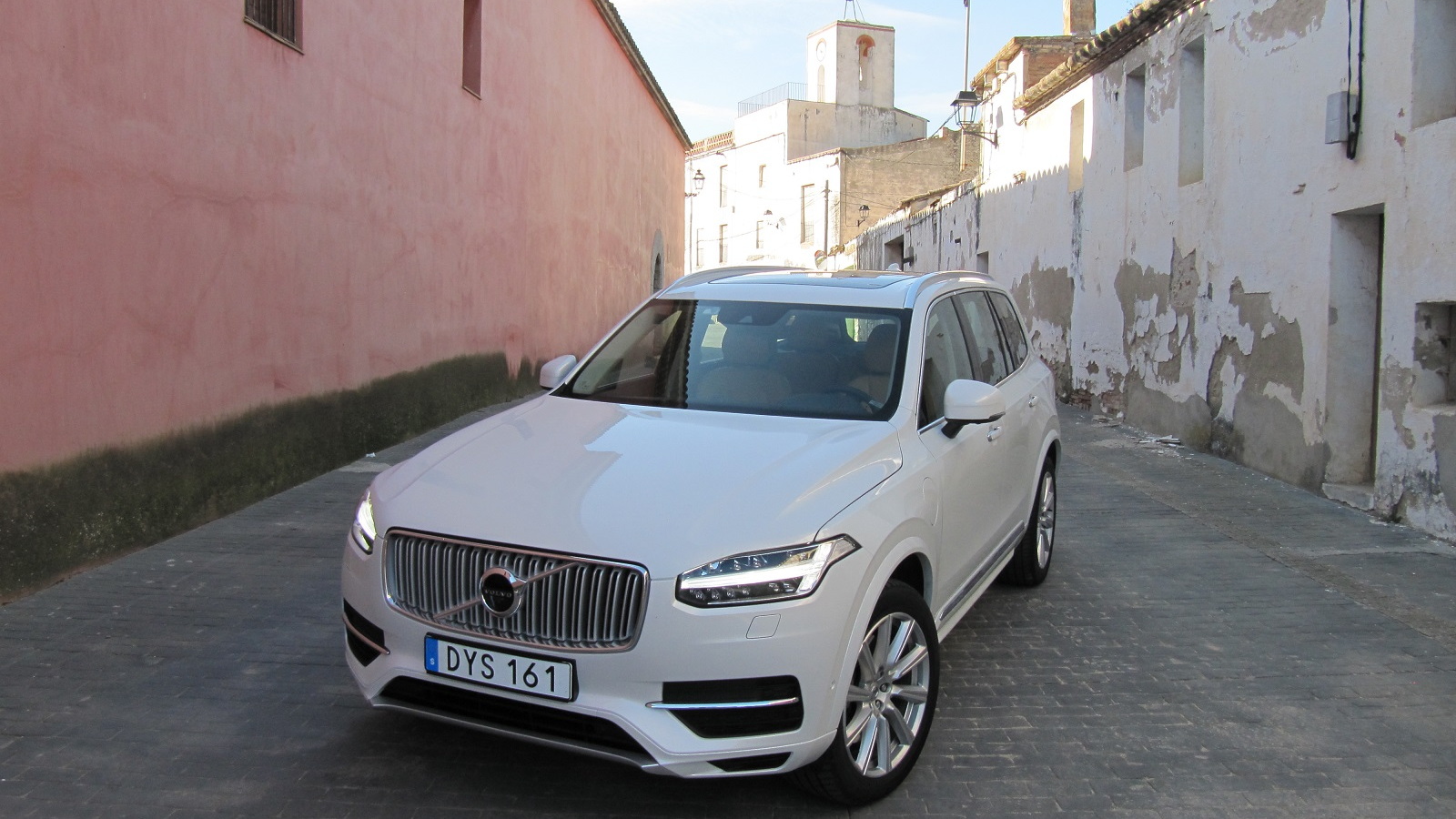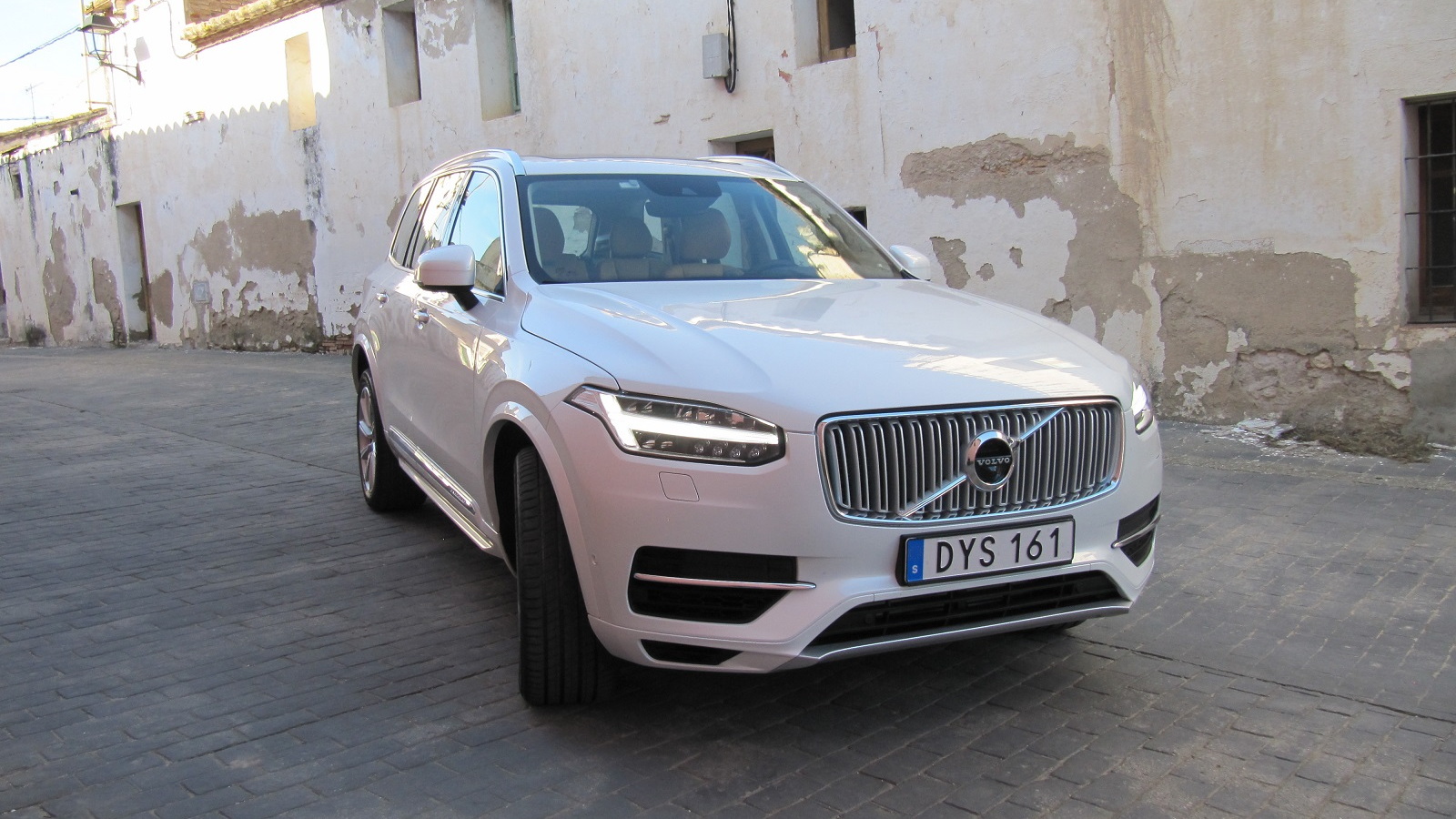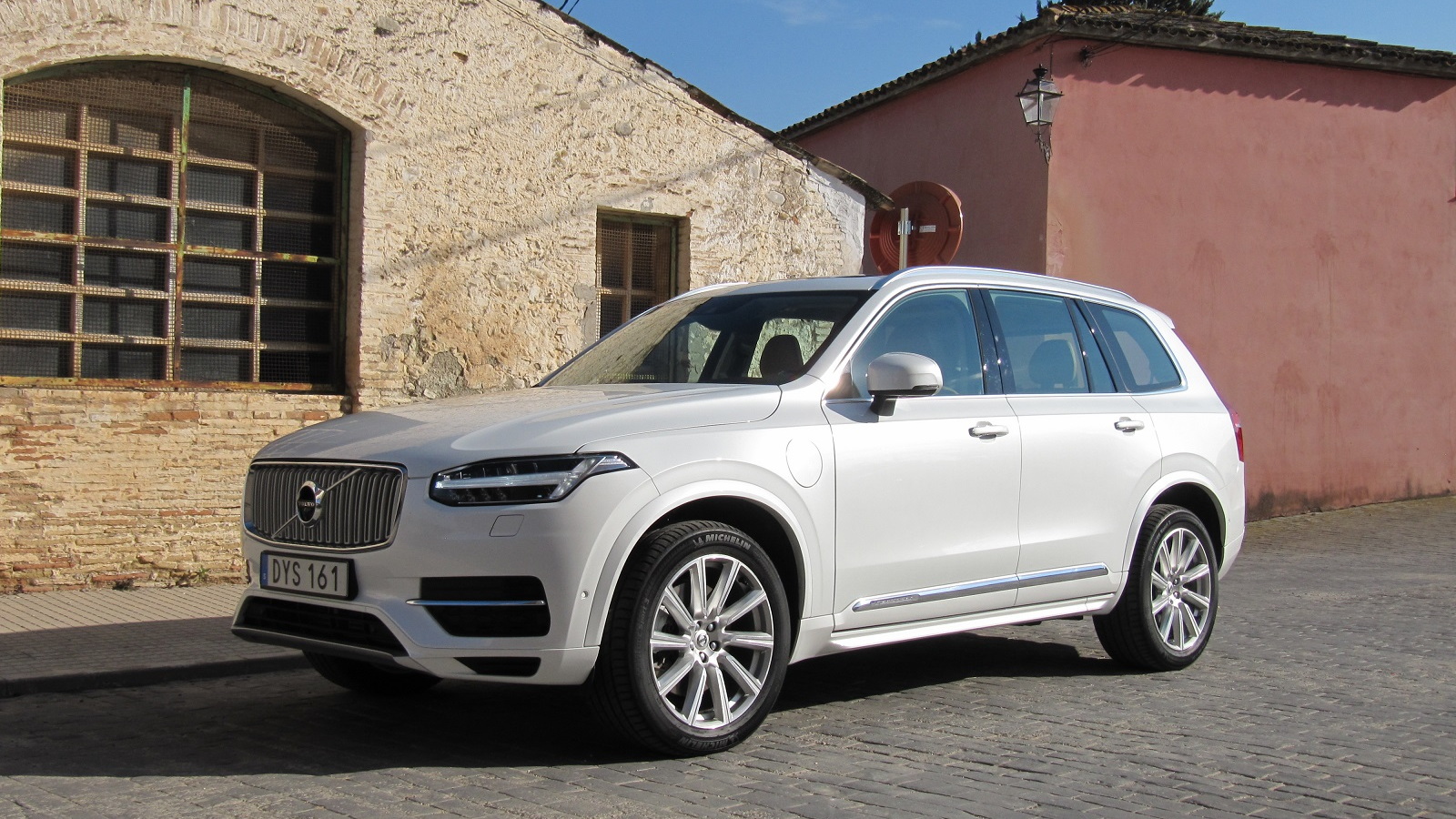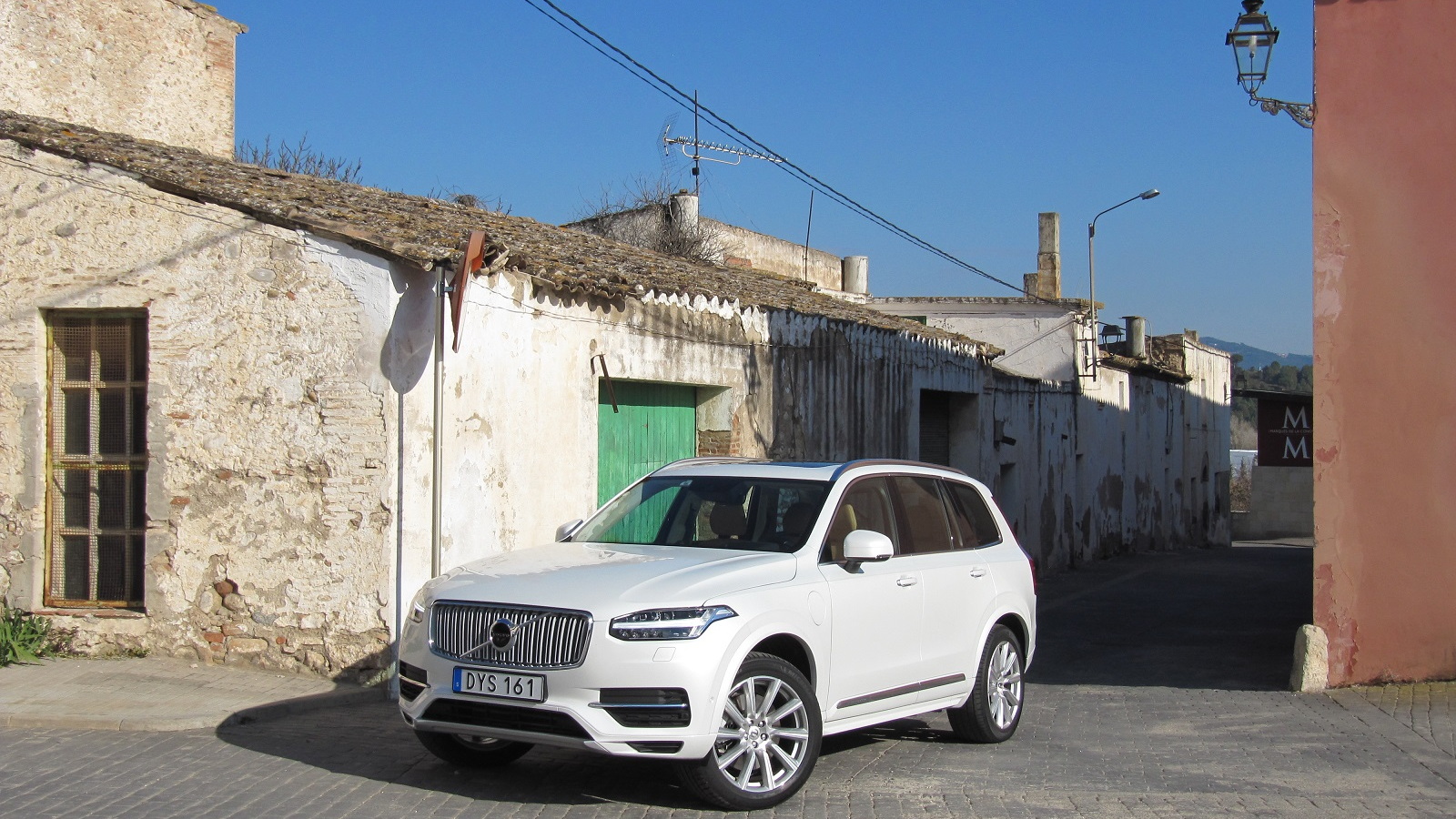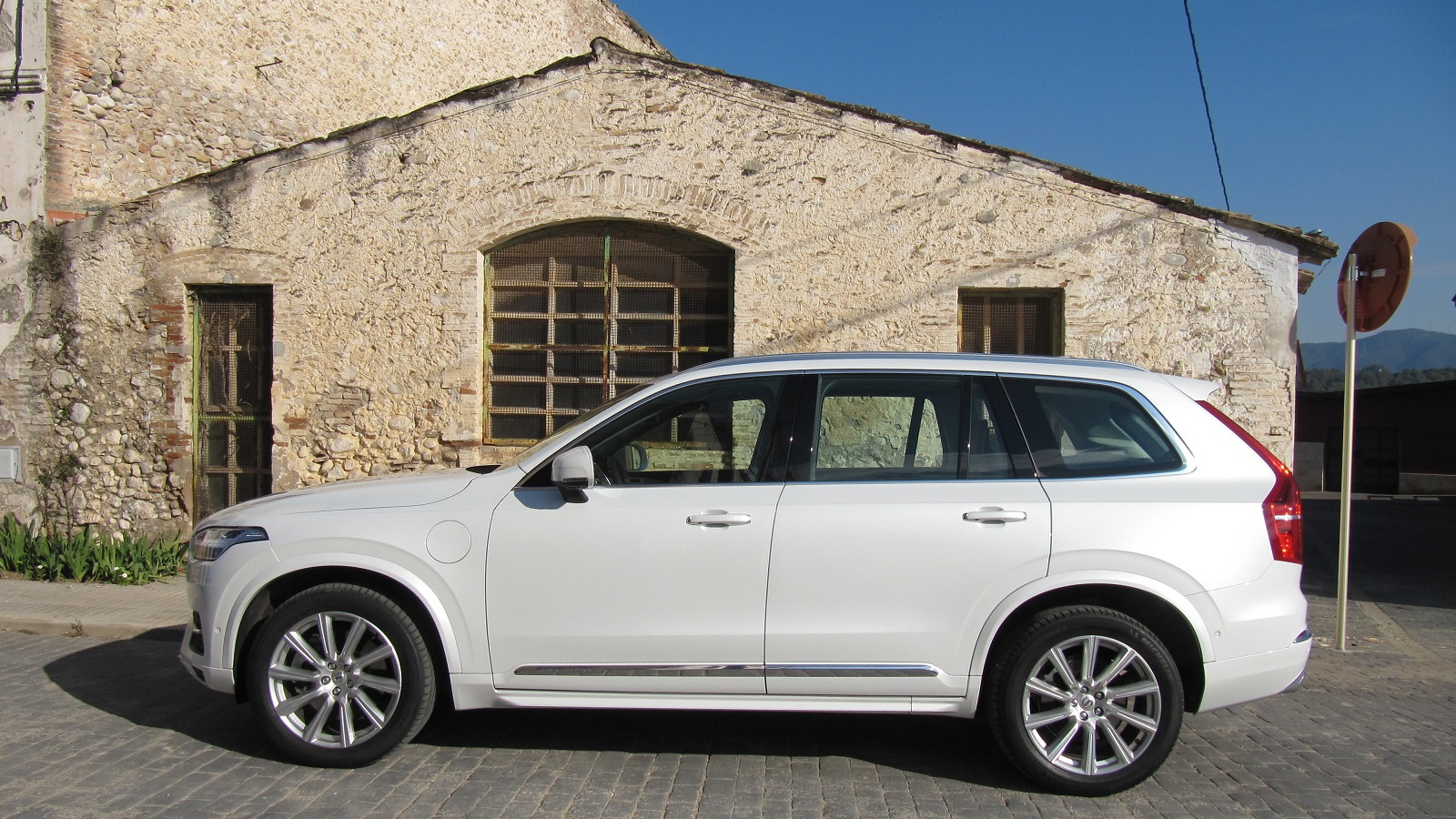By the end of this year, there will be several luxury SUV models offered in the U.S. with plug-in hybrid powertrains that let them run 12 to 20 miles on electricity alone.
We've now driven one of them, the 2016 Volvo XC90 T8 "Twin Engine" model, which will go on sale this fall.
And based on our impressions of a pre-production prototype driven 96 miles through the Spanish countryside southwest of Barcelona, we think buyers will be pleased.
DON'T MISS: When Will Plug-In Electric SUVs And Crossovers Go On Sale? (Jun 2014)
The plug-in XC90's most immediate competitors will be plug-in hybrid versions of the BMW X5 and Mercedes-Benz GLE (nee ML) luxury crossover utility vehicles.
The big Volvo plug-in has one advantage over its near-term electrified competitors, though: It's the only vehicle that was designed from scratch with a plug-in hybrid powertrain envisioned.
That allowed Volvo to put the battery pack not under the load bay, as the BMW and Mercedes do, but in the tunnel between the front passenger seats--meaning cargo capacity remains exactly the same as in the gasoline-only version.

2016 Volvo XC90 T8 'Twin Engine' plug-in hybrid, Spain, Feb 2015
That also makes it the world's sole seven-seat plug-in hybrid SUV; the German models and also the Mitsubishi Outlander Plug-In Hybrid all have only two rows and five seats apiece.
The lithium-ion battery pack itself has a capacity specified at 9.2 kilowatt-hours, of which 6.5 kWh is used to power the vehicle. Volvo quotes a range of 40 km (25 miles), but that's on the European NEDC cycle. We estimate that the comparable EPA number is likely to be between 18 and 21 miles.
The complete powertrain of the XC90 T8 comprises Volvo's 316-horsepower 2.0-liter supercharged and turbocharged four-cylinder engine powering the front wheels through an eight-speed automatic transmission, with a 60-kilowatt (80-hp) electric motor driving the rear wheels.
There’s also a 34-kW (46-hp) starter-generator motor between the engine and transmission, which recharges the battery during regenerative braking or engine overrun, and can also provide additional torque to the transmission when maximum power is required.
ALSO SEE: BMW X5 Plug-In Hybrid Prototype: We Drive Future Electric SUV (Apr 2014)
The battery and both electric motors are liquid-cooled, and the battery coolant can also be refrigerated if additional heat must be shed.
Volvo quotes a combined power output of "about 400 horsepower," but a precise torque figure of 472 lb-ft (compared to the 295 lb-ft produced by the non-hybrid version).
The onboard charger operates at 3.5 kilowatts and will have a North American standard J-1772 socket, though maximum amperage for the charger was quoted at 16 amps--a figure we're double-checking with Volvo.
The company quotes a recharging time of 2.5 hours at 240 volts and 16 amps.
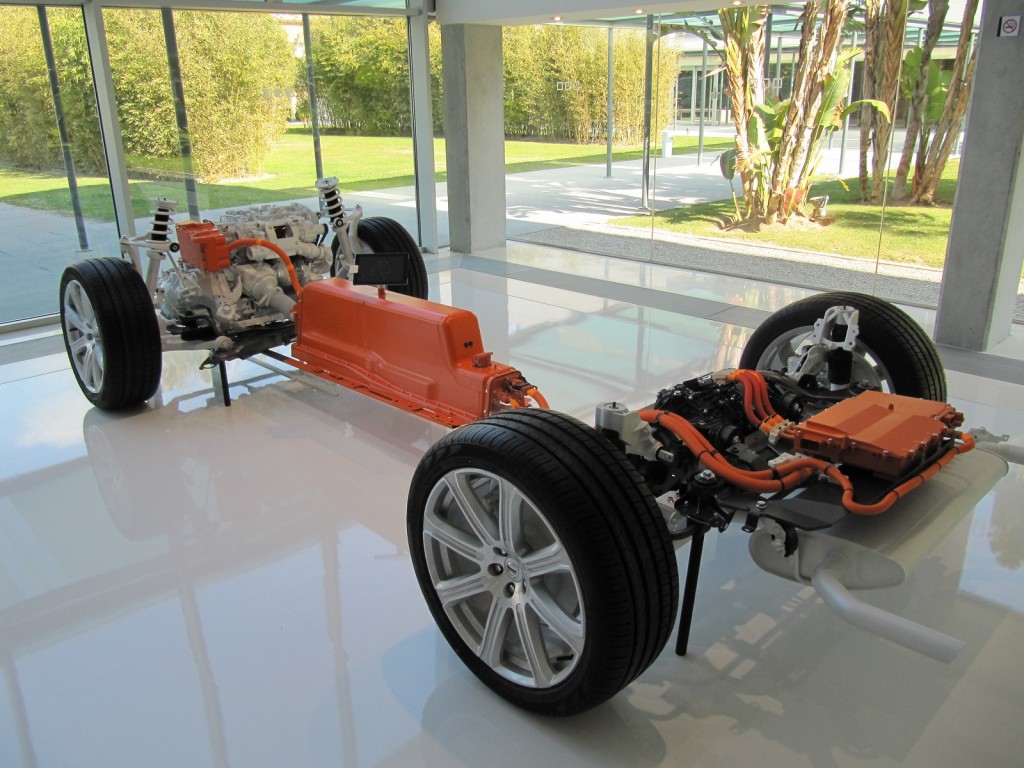
Powertrain of 2016 Volvo XC90 T8 'Twin Engine' plug-in hybrid, Spain, Feb 2015
The new XC90 range is the first redesign of Volvo's largest vehicle since 2002. It uses a new Scalable Product Architecture platform that will underpin most of Volvo's new models from now on.
While the 2016 XC90 is longer, wider, and taller than the previous generation--and has seven seats, including two third-row positions into which adults can fit, albeit tightly--it is roughly 200 pounds lighter.
The plug-in T8 model is by far the heaviest version, due to the additional weight of its battery pack, power electronics, and the rear electric motor that provides all-wheel drive when needed. (The non-electrified T6 model uses conventional mechanical all-wheel drive.)
MORE: 2016 Volvo XC90 T8 Twin Engine Plug-In Hybrid: Now We Have Specs
On the road, our prototype XC90 T8 moved out smartly under electric power once we set it in "Pure" mode, which maximizes electric operation.
It's one of no fewer than seven different drive modes on the plug-in hybrid.
The others are All-Wheel-Drive, Save (which conserves battery charge or uses the engine to recharge the pack up to 42 percent of capacity), Hybrid (the standard operating mode), Power (which remaps the throttle, transmission, and powertrain control software for faster acceleration), Off-Road (a low-speed mode for rough or slippery terrain), and Individual, which lets the drive customize the powertrain operating settings.

2016 Volvo XC90 T8 'Twin Engine' plug-in hybrid, Spain, Feb 2015
Our test T8 would operate under electric-only power at speeds as high as 80 kph (50 mph), though accelerating to that speed at a pace that kept up with swift-moving Spanish traffic inevitably kicked on the engine between 20 and 30 mph.
The Power mode was by far the most fun to drive, giving the big SUV a surge of power at virtually any speed--though as expected with so many gears in the transmission, one or two downshifts were inevitably required to get the engine up to its maximum power from its standard cruising speed of perhaps 1400 rpm.
We didn't attempt to calculate any kind of gas mileage, given our frequent switching among different drive modes, not to mention multiple tests of full-throttle acceleration, hard braking, and the like. That will have to wait until we get a production T8 model to put through our usual test route.

2016 Volvo XC90 T8 'Twin Engine' plug-in hybrid, Spain, Feb 2015
In general, the new 2016 Volvo XC90 appears smaller--both from the outside and as a passenger--than it actually is, considering its generous interior volume and enormous load bay with the third row folded down. Think of it as the anti-Escalade, perhaps.
The interior is calmly luxurious, with a delightful smell of Nappa leather from the seats (in the top-of-the-line Inscription model we drove) and metal and leather surfaces for the dashboard, console, and door panels.
One particularly nice touch is the illuminated shift lever, which is genuine Orrefors crystal--the first time, to our knowledge, that any automaker has managed to use real crystal glass in a production car.
The cabin is particularly light and airy, courtesy of large side windows and the two-panel panoramic sunroof, and rear vision is good for an SUV of this size--aided by the standard rear-view camera.
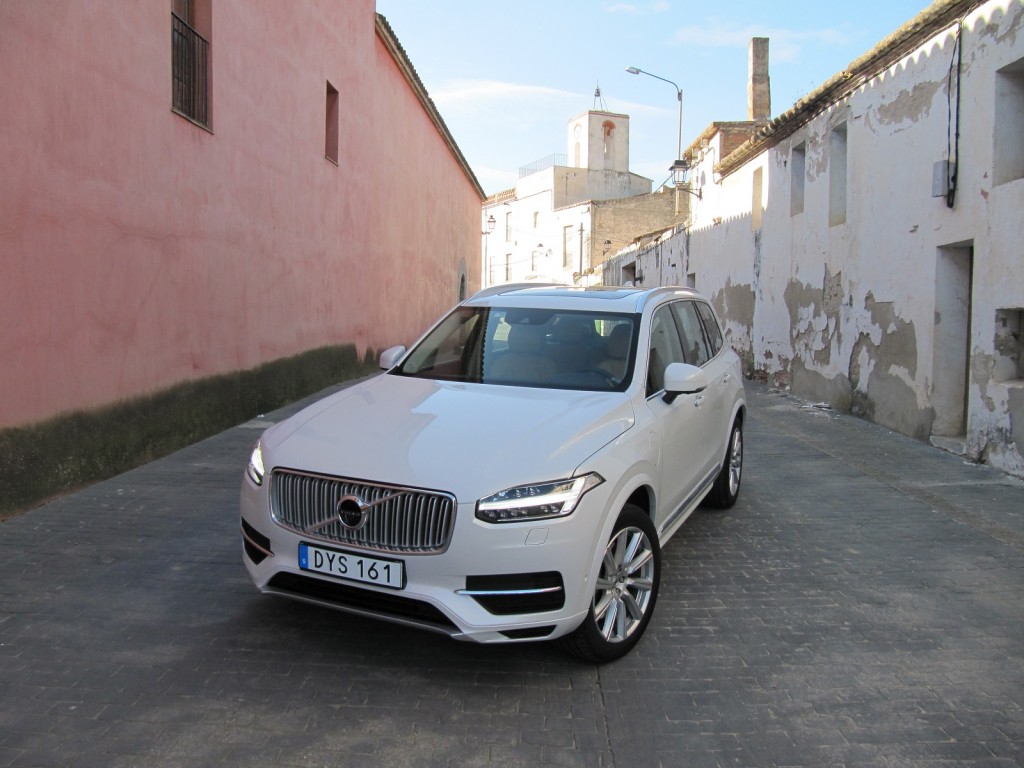
2016 Volvo XC90 T8 'Twin Engine' plug-in hybrid, Spain, Feb 2015
The ride is comfortable, although some road imperfections could be sensed through the low-profile tires on the handsome 20-inch 10-spoke alloy wheels. As always, you'll maximize ride comfort by ordering any car with a wheel-and-tire combination that offers the tallest sidewalls.
Overall, the XC90's handling verges on the nimble for its size. The feedback from the electric power steering is good, the turning circle is fairly tight, and it drives entirely like a car rather than a tall crossover with several inches of ground clearance.

2016 Volvo XC90 T8 'Twin Engine' plug-in hybrid, Spain, Feb 2015
We felt some inconsistencies in the blending of the regenerative and friction braking systems. Volvo later assured us that the software blending for the powertrain control and the brake/deceleration blending was still being worked on, and the vehicle we drove was "about 80 percent there".
Given production vehicles we've driven that were far lumpier in that respect--first-generation Hyundai Sonata Hybrid, ahem--we suspect Volvo will likely smooth out the last inconsistencies by the time the T8 goes into production late this summer.
We heard no motor whine at all--helped, no doubt, by the fact that the motor was behind us--and indeed, in electric mode, only tire noise was audible up to about 30 mph. Above that speed, wind noise was largely imperceptible until highway speeds were reached.
Overall, the pre-production version of the T8 plug-in hybrid XC90 we drove shows great promise and should compete head-to-head with comparable offerings from the German trio of Audi, BMW, and Mercedes-Benz--assuming Volvo's engineers manage to smooth out the software controlling the power blending.

2016 Volvo XC90 T8 'Twin Engine' plug-in hybrid, Spain, Feb 2015
One note to Volvo, by the way: We very much wish the "Twin Engine" label could be changed to "Twin Motor," since the electrical machine powering the rear wheels is a motor but not an engine.
That aside, we think Volvo should have little trouble delivering its anticipated 7 to 10 percent of the new XC90 line as plug-in hybrids, especially in markets like California.
The company sold about 28,000 XC90s in the U.S. last year, meaning it would be on track to deliver 200 to 250 XC90 T8 models a month once sales get going.
The new 2016 Volvo XC90 line will appear at Volvo dealers in May, a small number of special "First Edition" models will be delivered in June, and sales of the regular T6 model will start in July.
The plug-in hybrid T8 "Twin Engine" model will go on sale this fall, likely around October. Volvo hasn't yet released any information about its price.
Volvo provided airfare, lodging, and meals to enable High Gear Media to bring you this first-person drive report.
_________________________________________________
